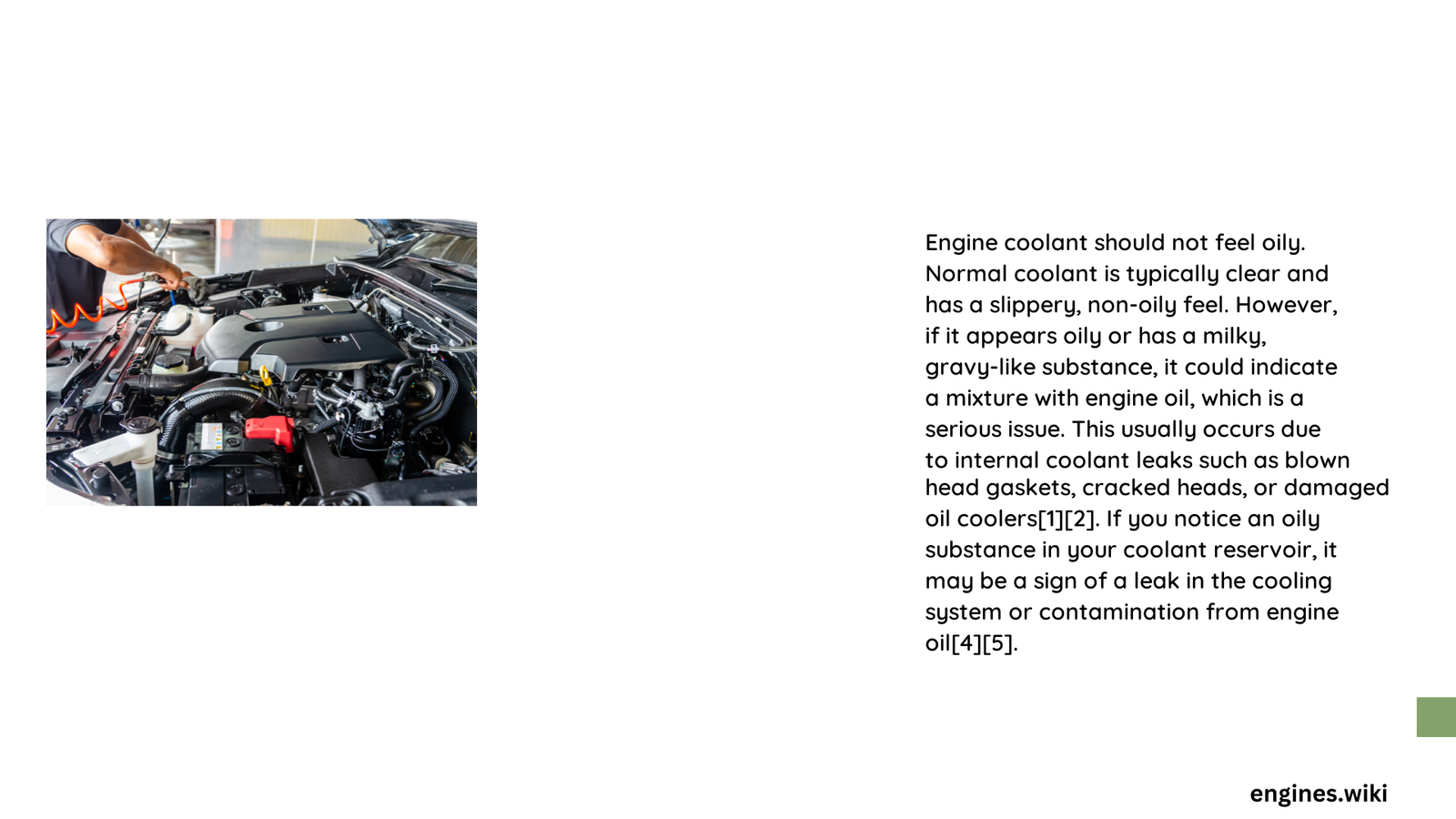Engine coolant is a critical fluid in your vehicle’s cooling system, designed to maintain optimal engine temperature and prevent overheating. Normally, coolant has a thin, water-like consistency and should never feel oily. An oily texture can indicate serious internal engine problems that require immediate attention, potentially signaling issues like head gasket failure, oil leaks, or internal engine damage that could lead to catastrophic engine failure if left unaddressed.
What Makes Engine Coolant Different from Oil?
Why Does Pure Coolant Not Feel Oily?
Engine coolant, typically a mixture of ethylene glycol and water, has distinct physical properties that differentiate it from oil:
| Property | Coolant | Motor Oil |
|---|---|---|
| Viscosity at 20°C | 5.8 centistokes | 10-15 centistokes |
| Texture | Thin, water-like | Thick, slippery |
| Primary Function | Heat transfer | Lubrication |
Chemical Composition of Coolant
- Primary Ingredients:
- Ethylene glycol (50-70%)
- Water (30-50%)
- Additives for corrosion protection
What Causes Coolant to Feel Oily?
When engine coolant feels oily, it typically indicates serious mechanical issues:
- Head Gasket Failure
- Allows oil and coolant to mix
- Creates a milky, oily texture
-
Potential repair costs: $1,000 – $3,000
-
Internal Oil Leaks
- Occurs through:
- Cracked engine block
- Damaged cylinder head
- Compromised gasket seals
-
Can lead to complete engine failure
-
Contamination Indicators
- Milky or brown coolant color
- Visible particulate matter
- Increased viscosity
- Unusual odor
How to Diagnose Oily Coolant?

Professional Diagnostic Steps
- Visual inspection of coolant
- pH level testing
- Oil-in-coolant test kit
- Pressure test of cooling system
- Comprehensive engine diagnostic scan
Potential Repair Scenarios
| Issue | Estimated Repair Cost | Complexity |
|---|---|---|
| Minor Gasket Leak | $300 – $800 | Low |
| Head Gasket Replacement | $1,000 – $3,000 | Medium |
| Engine Block Repair | $3,000 – $5,000 | High |
| Complete Engine Replacement | $4,000 – $8,000 | Critical |
Prevention and Maintenance Tips
- Regular coolant system inspections
- Annual coolant flush
- Monitor coolant color and consistency
- Address any overheating issues immediately
- Use high-quality coolant recommended by manufacturer
Warning Signs to Watch
- Immediate Action Required:
- Milky or brown coolant
- Sweet burning smell
- White smoke from exhaust
- Consistent engine overheating
Conclusion
An oily feeling in engine coolant is never normal and always requires professional investigation. Prompt diagnosis can prevent extensive and expensive engine damage.
Reference:
1. SAE Viscosity Standards
2. Automotive Coolant Composition
3. Coolant System Diagnostics
